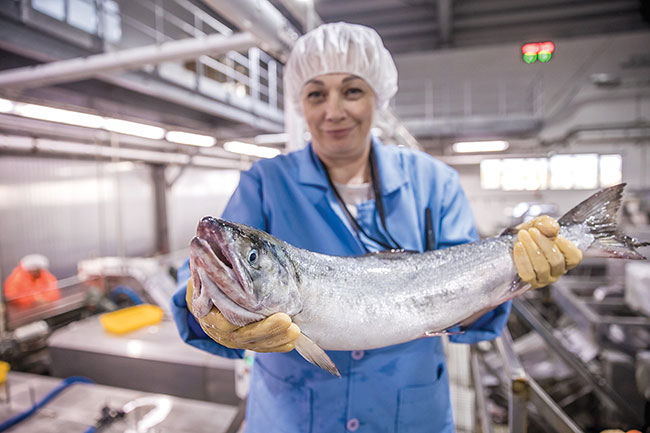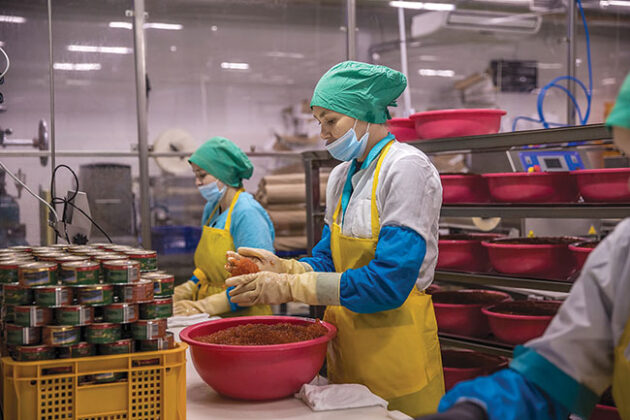
News & Views
Pacific salmon breeding plan is outperformed in Russia
March 13, 2024 By Vlad Vorotnikov
 Hatcheries play an important role in the Pacific salmon catching in Russia. Photo: Maxim Fedotov, Rosrybolovstvo
Hatcheries play an important role in the Pacific salmon catching in Russia. Photo: Maxim Fedotov, Rosrybolovstvo During the first nine months of 2023, Russian hatcheries released 201.7 million units of Pacific salmon fry in the Far East, against 178 million envisaged by the state plant, Glavrybvod, a Russian government agency managing state-owned hatcheries, has disclosed in a statement on its website.
As usual, most Pacific salmon was bred for the Sakhalin Island, where 110 million fry were released, compared to 104 million prescribed by the government plan, Glavrybvod reported.
Maintaining the fish population at a high level significantly contributes to Russian food security, Glavrybvod emphasized in the statement.
Russia’s Pacific salmon catches are on the rise. In 2023, Russian Far Eastern fishermen caught 609,000 tonnes of salmon – the second-largest result. The figure is more than twice above the level of the previous year, and 13 per cent up compared with 2021, the Russian federal agency for fisheries, Rosrybolovstvo, estimated.

Salmon catches are important for Russian food security. Photo: Maxim Fedotov, Rosrybolovstvo
Russian recreational programs are believed to play an essential role in the growth of catches. Over the past few years, several prominent Far Eastern fishing companies have established hatcheries to support the salmon population in the region, and complement the government efforts in this field.
Some environmentalists, however, warned against scaling up the recreational program. One study, for example, discovered that the replacement of wild populations by hatchery fishes, as a result of abundant juvenile hatchery releases combined with extensive poaching in spawning grounds, was apparent in Russia.
The researchers claimed that the importance of the conservation of wild salmon populations requires a more detailed study of the consequences of interactions between natural and artificially reared fishes.
Print this page
Advertisement
- Sudan aquaculture suffers destruction from war
- Evaluating the feasibility of feeding RAS-produced fish during the depuration process





